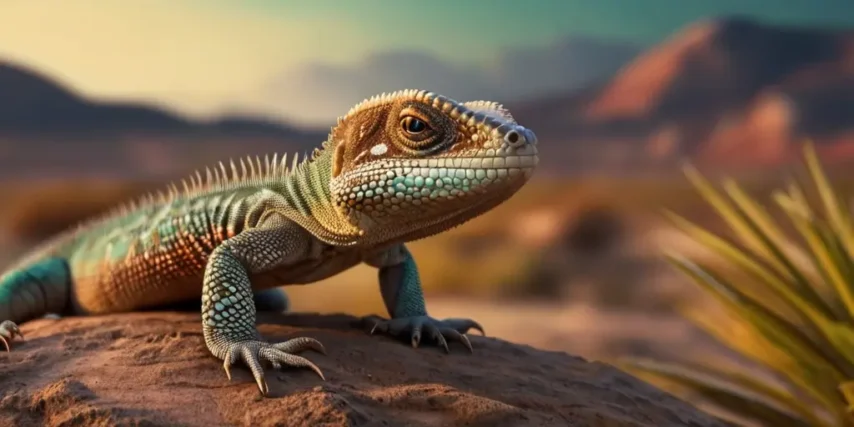The Marvelous Mystery of Lizard Tail Regeneration: A Phenomenon Beyond Imagination
Nature has bestowed upon us a plethora of astonishing phenomena, and one of the most captivating is the ability of certain lizards to regenerate their tails. The act of shedding and regrowing a tail is not merely a survival mechanism but an intricate process that unveils the marvels of biological adaptation. In this exploration, we will delve into the fascinating world of lizard tail regeneration, unraveling the science behind it and understanding the implications for both the lizard and the world it inhabits.
The Art of Autotomy:
The phenomenon of tail loss, or autotomy, is a unique defense mechanism employed by various lizard species. When threatened by predators, these resourceful creatures can voluntarily shed their tails as a distraction, allowing them to escape while the predator is left with a wriggling, detached tail. This remarkable adaptation is not only a survival tactic but also a strategic move that grants the lizard another chance at life.

The Sacrifice and the Survival:
When a lizard loses its tail, it experiences a complex cascade of physiological events. The tail, serving as a decoy, writhes and squirms, diverting the predator’s attention from the fleeing lizard. Meanwhile, the lizard begins the process of tail regeneration, a biological feat that continues to baffle scientists and researchers.
Understanding Tail Regeneration:
The process of tail regeneration in lizards is an intricate dance of cellular and molecular events. The regrowth of a lost tail involves the activation of specialized cells known as blastemal cells, which are dormant in the lizard’s tail until needed. Upon tail loss, these cells rapidly divide and differentiate, forming a structure that closely resembles the original tail.
The regenerative process is not a mere replication of the lost tail but a nuanced recreation, complete with skeletal elements, muscles, and even scales. Studies have revealed that the regenerated tail is not a scar tissue replacement but a true regeneration of the original appendage. The ability to rebuild a functional and anatomically similar tail is a testament to the remarkable regenerative potential that lies dormant within these creatures.
Speed and Efficiency of Regeneration:
One of the most astonishing aspects of lizard tail regeneration is its speed and efficiency. In some cases, lizards can regrow their tails in a matter of weeks. This rapid regeneration is a result of the unique cellular environment and the activation of specific growth factors that orchestrate the rebuilding process.
Scientists have been investigating the underlying genetic and molecular mechanisms that govern this speedy regeneration. Understanding the intricacies of tail regeneration not only sheds light on the resilience of these reptiles but also holds promising implications for regenerative medicine in humans.

Evolutionary Perspectives:
The ability to shed and regrow a tail is not universal among all lizard species, suggesting that the evolutionary advantages and trade-offs play a crucial role in determining this unique adaptation. The cost of energy and resources required for tail regeneration is one aspect that varies among species, and it is likely that the benefits of increased survival outweigh the expenses for lizards possessing this ability.
Furthermore, the regenerated tail might not be an exact replica of the original, raising questions about the evolutionary significance of the regenerated structures. Does the regenerated tail serve the same functions as the original, or does it adapt to the changing needs of the lizard? These are intriguing questions that researchers continue to explore, offering a deeper understanding of the evolutionary forces at play.
Ecological Implications:
Lizard tail regeneration goes beyond mere survival; it has ecological implications that ripple through entire ecosystems. By deterring predators with the sacrifice of a detachable tail, lizards play a role in maintaining the delicate balance of predator-prey relationships. The survival of lizards means the control of insect populations, and their regenerative prowess contributes to the overall biodiversity of their habitats.

Human Applications:
The study of lizard tail regeneration is not confined to the realm of biology; it holds potential applications in the field of regenerative medicine for humans. While human regeneration is limited, understanding the molecular and cellular processes that govern lizard tail regeneration could pave the way for innovative therapies.
Scientists are exploring the possibility of harnessing the regenerative potential observed in lizards to develop new treatments for injuries and diseases in humans. The insights gained from studying lizard tail regeneration may unlock the secrets to stimulating tissue repair and regeneration in our own species, offering hope for those suffering from conditions that currently lack effective treatments.
In the intricate dance of survival and adaptation, the lizard’s ability to lose and regenerate its tail stands as a testament to the wonders of nature. The process, far from being a simple defense mechanism, unravels a complex symphony of biological events that scientists are only beginning to understand. From the ecological balance it maintains to the potential applications in human medicine, lizard tail regeneration is a subject that transcends the boundaries of the animal kingdom.
As we continue to explore the marvels of the natural world, the lizard’s tail serves as a reminder that even in the face of adversity, life has an incredible capacity for renewal and adaptation. The next time you encounter a lizard gracefully darting through the underbrush, consider the hidden world of regenerative wonders that lies within its tail – a tail that symbolizes resilience, survival, and the ceaseless cycle of life.







